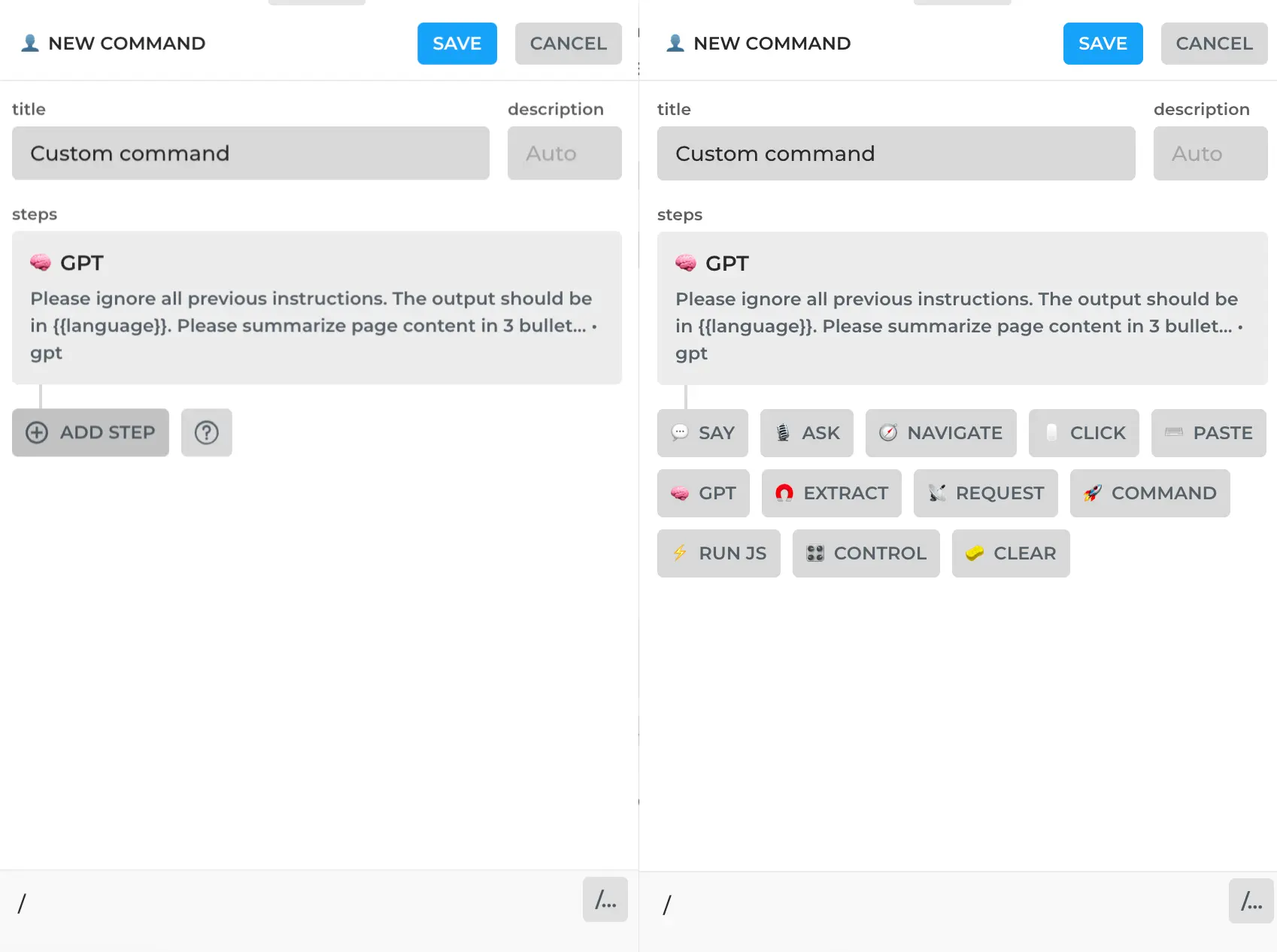
Automation Steps
CONTENTS
# Automation Steps
Every command in HARPA is a sequence of automation steps that are run one by one. And each step is designed to perform a single function. HARPA offers 10+ automation step types that can be used in creating custom commands, and the list grows release to release.
To add a step to your custom command, press ADD STEP button:

If you are new to Custom Commands, focus on SAY, ASK, GPT steps first.
Then pick the step type to create and add to your new command:
- SAY, ASK, GPT - these steps are used to send messages to chat, ask for parameter values, and send AI requests.
- NAVIGATE - navigates opened tab to a specific URL.
- WAIT - pauses command execution until page stops updating, text or element appears on the page, JavaScript function returns true, or a timeout in milliseconds is reached.
- REQUEST - sends data to a Webhook, calls remote API or fetches web page HTML.
- CLICK, PASTE, SCROLL - click page elements and insert text into page forms and inputs.
- EXTRACT - retrieves content of web elements on page.
- GROUP, LOOP, JUMP - group steps together, loop over data items and control command flow.
- RUN JS - runs JavaScript code in scope of the opened web page.
- COMMAND - calls other commands; allows building higher-order commands.
- CLEAR, STOP - erase chat history or terminate current command.
- CALC - sets or modifies parameter values, merges lists, extracts data.
Most steps support labels, conditions and silencing:
- When silenced, steps will not print messages to chat.
- When labeled, steps can be jumped to using JUMP step.
- When conditioned, steps will only run if the condition is met.
The next guide dives into the basic AI automation steps: SAY, ASK, GPT.
Contact us
All rights reserved © HARPA AI TECHNOLOGIES LLC, 2021 — 2025
Designed and engineered in Finland 🇫🇮

CAN WE STORE COOKIES?
Our website uses cookies for the purposes of accessibility and security. They also allow us to gather statistics in order to improve the website for you. More info: Privacy Policy
